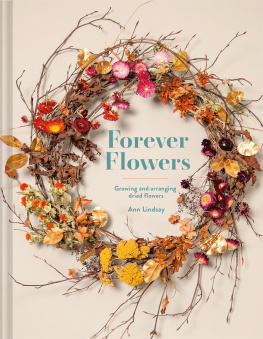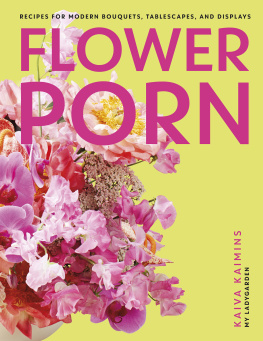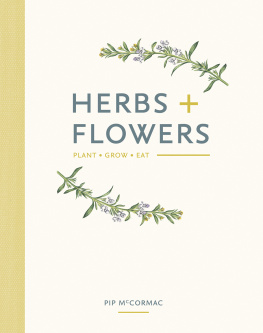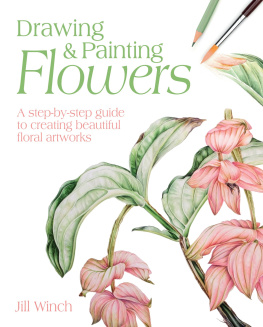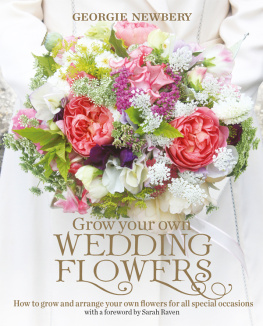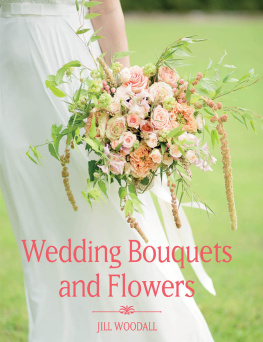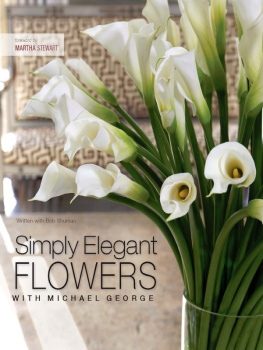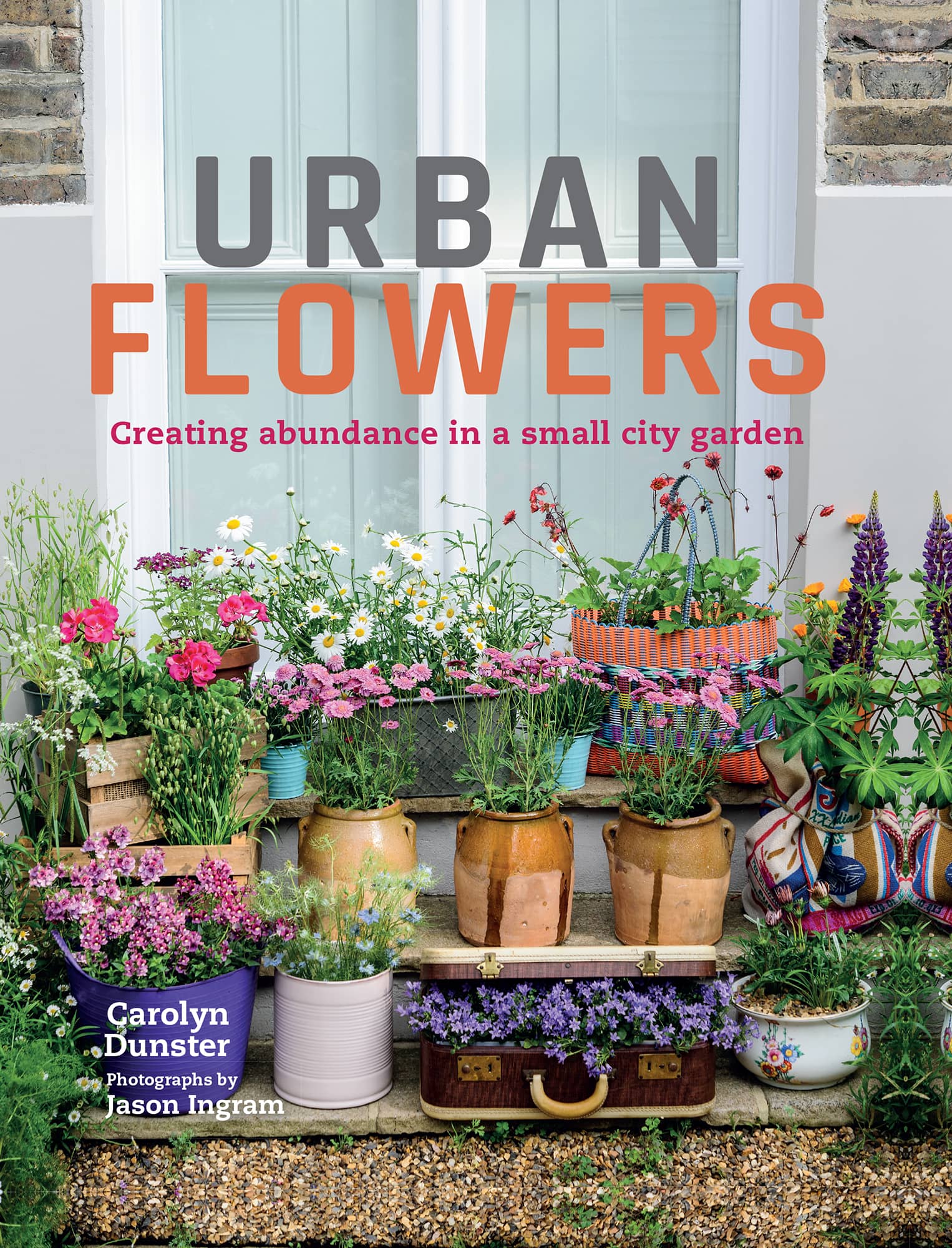For my mother, Sonia Dunster (19362016)
URBAN
FLOWERS
Creating abundance in a small city garden
Carolyn Dunster Photography by Jason Ingram

CONTENTS
Guide
MY STORY
For as long as I can remember flowers have played a huge part in my life. I grew up in a small seaside town with the countryside on my doorstep, and from an early age I made a deep and everlasting connection with the natural world, which has fuelled my passion for plants and my career.
Me aged five with my younger sisters in the first flower-filled garden planted by my parents.
My sisters and I would spend hours roaming the fields at the back of our house where I would pluck the wildflowers growing liberally in the hedgerows that criss-crossed the gently rolling landscape. Once home, these brightly coloured gems would be pressed between sheets of weighed-down paper and then transferred to my scrapbook for labelling in my very best handwriting. In those pre-internet days I identified them from a book that had been passed to me from my grandmother: scarlet pimpernel, shepherds purse, field mouse-ear, birds-foot trefoil their enchanting names fired up my girlish imagination and I saw them as characters starring in their very own fairy tales.
Many years later, after I had taken the plunge and decided to make a career out of working with flowers, I realised this game wasnt as whimsical as it sounds. Flowers do indeed have their own special characteristics. On a botanical front, it is how scientists identify them, but speak to anyone in the flower world and they will agree that many blooms have distinctive personality traits. Some are extrovert, gregarious types, brazen even, who love to show off everything they possess. Others are shy and will need a fair amount of coaxing before they agree to display their secret loveliness, but they are somehow all the more beguiling because of their reticence.
Just like shoes and handbags, flowers fall in and out of fashion and the shouty extroverts often fall prey to this, becoming the must-haves for a couple of seasons yes, darling dahlias, I am looking at you! In the meantime, the more self-effacing types will stay in the background, gradually becoming your lifelong stalwarts. Look no further than the elegant spires of the foxglove family; watch the flowers unfurl to reveal their hidden beauty and you will see what I mean.
Spiky orange cactus dahlias steal the show in a mixed planting scheme.
Lessons learned
From the study of wildflowers to the cultivation of garden blooms, my upbringing taught me a lot. My childhood home by the sea was built on land sold to a developer by the local farmer, who owned the surrounding fields, and when we moved in we inherited a building site. Through a huge amount of hard, backbreaking work that involved endless digging, we turned the rubble into a garden full of flowers. Here, in my own dedicated patch, I was allowed to grow what I wanted and my pocket money would go on packets of seeds, much as it does now. Through trial and error I learned what I could easily grow and, more importantly, what gave the most back for its buck.
Exploring the fields beyond our second garden, I discovered my enduring love of the natural world.
Wild flowers, including purple loosestrife and water dropwort, line the riverbanks of the English countryside in late summer. It is permissible to pick invasive species, such as the bright pink Himalayan balsam that you see everywhere, but not rare varieties.
My front garden today is filled with a profusion of lavenders, daisies and roses reminiscent of my childhood.
Moving on
When I left home to pursue my education my parents moved away from the house too. I have never returned to the garden we made but I visit it regularly in my mind. Needless to say, nostalgia dictates that it is always sunny there. I see a picnic spread out on a rug on the lawn, my little white guinea pig is in her run and I am picking a mixed posy of garden blooms to display in my bedroom. The detail is hazy and I cant tell which varieties of flowers I have selected but as I get older I find the overall image comforting. I am guessing that some of the original plants or their offspring are still growing there happily several decades later, demonstrating their power to endure when everything else has changed and the inhabitants have all moved on. I now live in an inner city borough of one of the largest, busiest metropolises in the world, which could not be more different from the semi-rural bucolic surroundings of my childhood.
I love the city. The constant hustle and bustle, the cosmopolitan mix of people, the fast-moving pace of life and the noise all add up to a vibrancy that makes me feel truly alive and purposeful, but we all need a break from it now and then. I have lived in the same area for many years, moving from a series of rented studios and apartments to a house with a small garden that is now home to my own family. For quite a long time I had no outdoor space and I sought out the parks, public gardens and open green areas as a retreat. I find I need an escape from the constant onslaught of urban living and some green space is essential to me, providing a peaceful sanctuary.
My need to touch and feel and get my hands dirty did not diminish when I came to live in the city. In fact, its been quite the opposite. My heart has grown even fonder of plants and I have found infinite ways of growing my own flowers, even in the tiniest of spaces ideas I hope to pass on through the pages of this book.
THE CITY GARDEN
CREATING AN URBAN HABITAT
My aim in this book is to share not only my love of flowers, and the joy they have brought me throughout my life, but also to show how it is possible to grow your own blooms in the heart of an urban area and in the tiniest and most unlikely of spaces.


